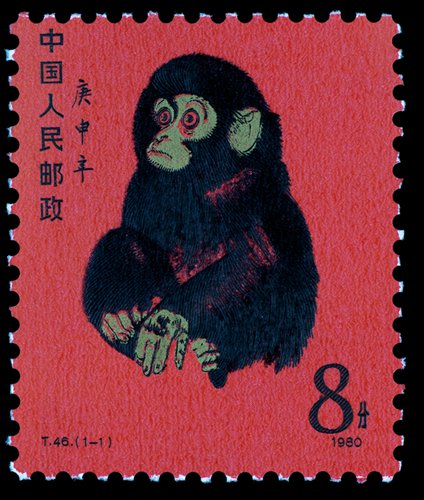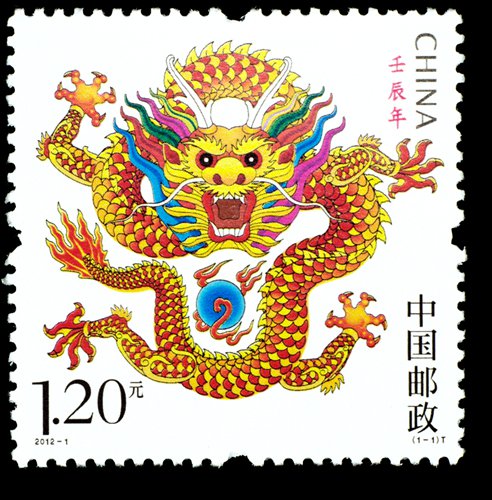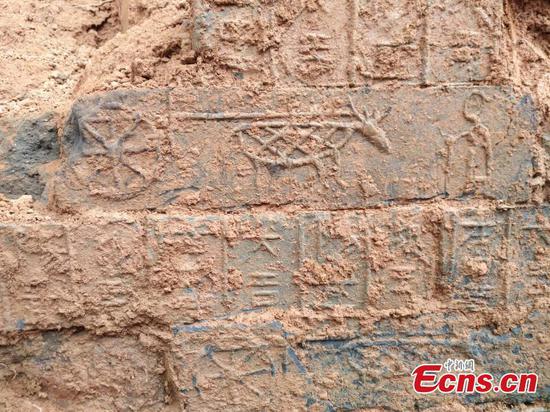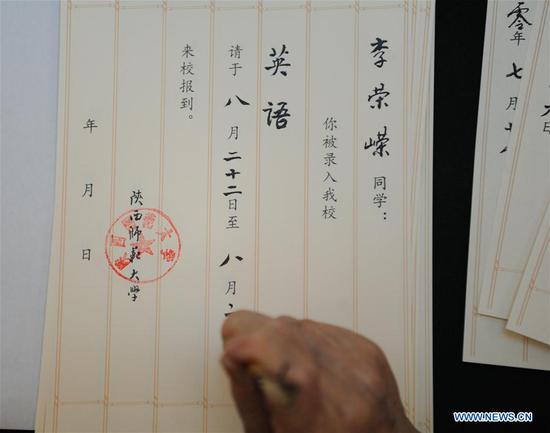
The first Chinese zodiac stamp - a monkey stamp issued in 1980. (Photo/Courtesy of Stamp Issue Bureau)
January 5 is a big day for stamp collectors because it is the day new Chinese zodiac stamps are issued every year. In 1980, famous Chinese painter Huang Yongyu created the image for the first monkey stamp, marking the beginning of issuing Chinese zodiac stamps.
Over the past three decades, Chinese zodiac stamps have made a great contribution in promoting traditional Chinese culture. Elaborately designed by famous artists, each stamp is an imprint of its time, a witness to the great changes in China since the reform and opening-up.
The first zodiac stamp in the world was released in Japan on February 1, 1950. China did not begin to issue zodiac stamps until 1980. The practice was delayed in China because during the Cultural Revolution (1966-76) the Chinese zodiac was considered one of the "four olds" (old ideas, old culture, old customs and old habits).
Soon after the Cultural Revolution ended, then Deputy Director of the Stamp Issue Bureau Xue Tie suggested issuing the "the Year of the Horse" (1978) stamp. So, on May 5, 1978, the bureau issued 10 special stamps and a souvenir sheet with Xu Beihong (1895-1953)'s horse-themed painting. The stamps were widely praised.
In 1979, when the reform and opening-up just began, the China Stamp Issue Bureau, inspired by the Chinese zodiac stamps issued by Hongkong Post, started to prepare for the first round of Chinese zodiac stamps. The China Stamp Issue Bureau believed that the stamps would not only meet public demand, but also play a role in promoting traditional Chinese culture.
On February 15, 1980 (Chinese New Year's Eve), a monkey stamp, painted by Huang Yongyu and designed by Shao Bolin, was issued, becoming the first stamp in the Chinese zodiac stamps series. Since then, zodiac stamps are released on January 5 so that people can use new stamps before Chinese New Year.
The year 1992 witnessed a great change in Chinese stamps. In that year, the China Post imprint replaced the old one, People's Post of China, and the English word "China" was added on the stamps. Commemorative stamps and special stamps were also numbered according to the year. Due to the changes, the issue date of that year's monkey stamp was postponed to January 25.

The 1992 set of monkey stamps also contained two sheets, as did the other zodiac stamps printed in that year.
The third round of zodiac stamps boasted a more colorful and international design. The 2012 dragon stamp is a great representative of this round. Designed by Chen Shaohua, the stamp bears a traditional curly Chinese dragon in gold and red, showing its sharp teeth and claws as it flies across the heavens. Some say it conveys a message of aggression. But Chen believed that as the holy animal of China, the dragon is different from the other 11 zodiac animals. So, the dragon stamp designs should also be different.
After reviewing a large number of dragon images in Chinese history, Chen finally chose the panlong image from the Ming (1368-1644) and Qing (1644-1911) dynasties, which was commonly used to decorate the imperial robe.
Through the dragon, Chen wanted to show its power and authority as the holy animal that protects people from evil and brings happiness.
In 2016, 36 years after the first monkey stamp. Huang Yongyu was in charge of the design of the fourth set of monkey stamp again, marking the beginning of the fourth round of Chinese zodiac stamps. This two-piece set features a total of four different monkeys, symbolizing a big happy family.
2018 is the Year of the Dog, and the dog stamp set also has the theme of "the happy reunion of family." On the first piece, a male dog stands and stares into the distance, guarding the house, and on the second one, a female dog looks lovingly at her black pup. The two stamps symbolize the harmony of family and the prosperity of the country.
From the beginning of the reform and opening-up, Chinese zodiac stamps have witnessed the great changes and development of China. They act as a bridge that links the life of ordinary Chinese citizens with traditional Chinese culture, becoming an iconic symbol of the China National Philatelic Corporation. The history of Chinese zodiac stamps is also the history of China's reform and opening-up.


















































